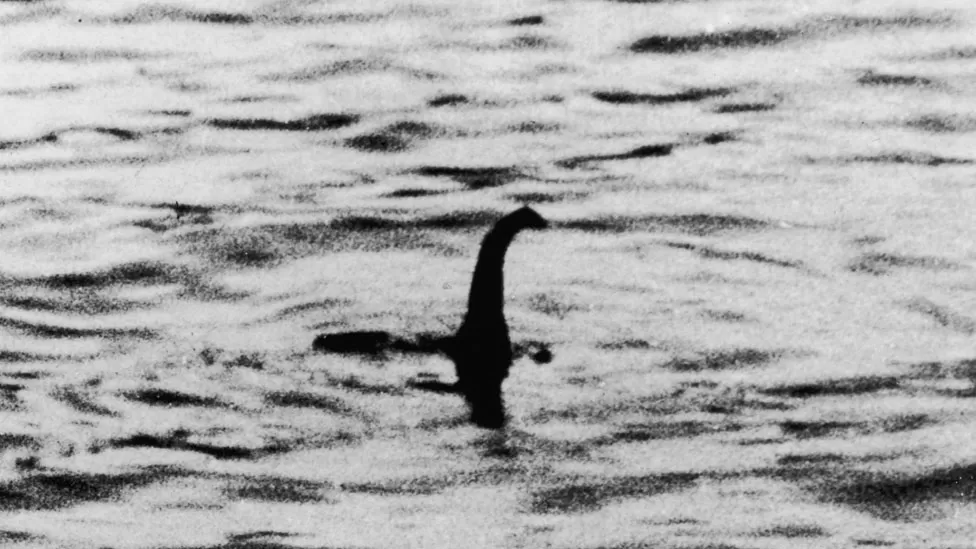
The filmmakers of The Water Horse: Legend of the Deep present audiences with the idea that a wild, Scottish mythological creature can (a) exist, (b) be a pet, and (c) a friend, to a young boy. Angus and the water horse’s friendship makes the point that not only can dogs be ‘man’s best friend’, but so can any creature that can learn to trust humans. Such a friendship might usually require the animal to be tamed and trained to long for human companionship over the wild. In this friendship there is no promise of that.
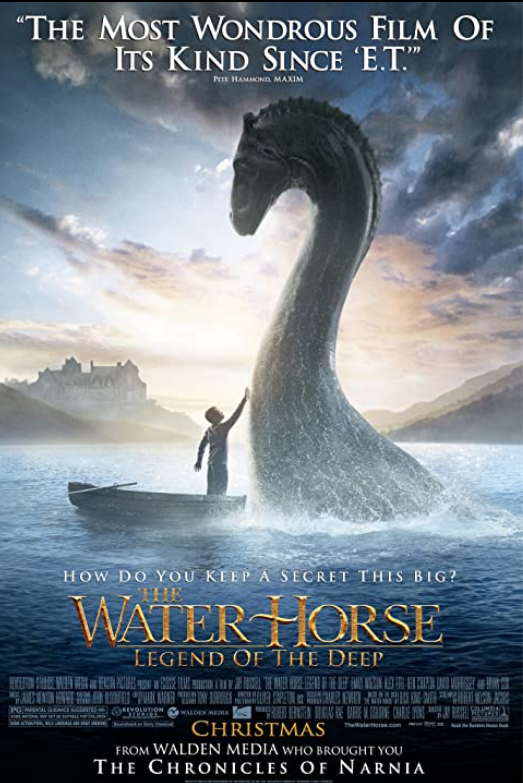
Before even knowing what a water horse is, or what its diet might consist of, Angus tries to care for it by feeding it the kitchen scraps. He struggles through the storeroom door with a bin, looking around for the water horse with the camera following and turning the wrong way just as a high-pitched garbled noise comes from behind. Angus whips around at the same time as the crash of the falling bin, to see food spilled and the small creature rummaging around in the big pile. He smilingly calls it a ‘’sneaky devil’’, like he might a mischievous and messy, yet loveable pet.[3] The water horse’s insatiable appetite so early in its life points to the looming transformation and huge size it will reach, reminding the viewer this mythological beast is not the average pet.
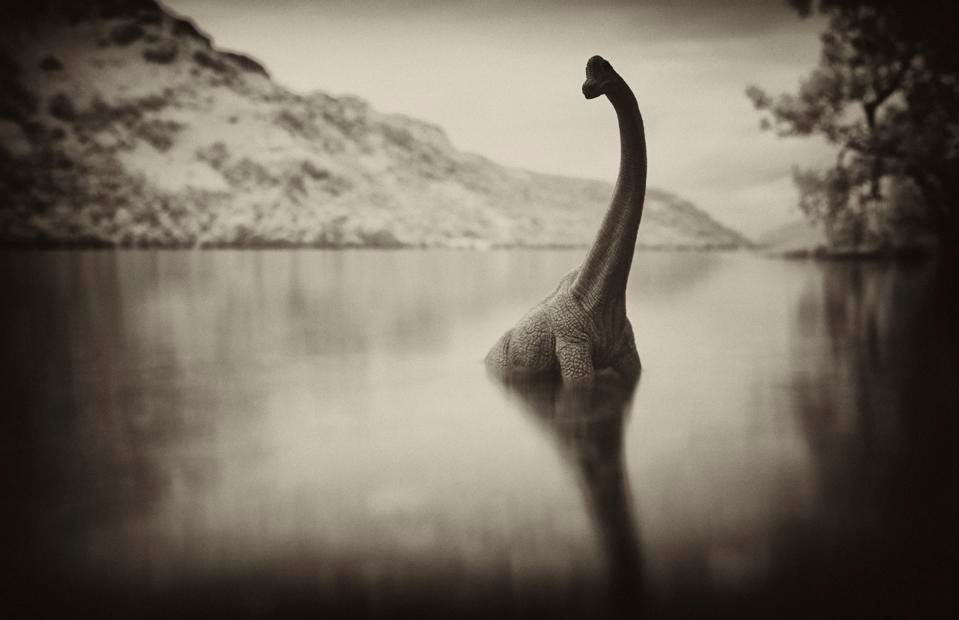

The film emphasises Angus’ choice to name the creature Crusoe, but by moving the camera away from Crusoe to focus on Angus, it is clear the name is for Angus’ benefit, as Crusoe remains audibly eating in the background and oblivious. This name also highlights the impossible nature of the friendship and foreshadows the duo’s eventual separation since Angus notes that both the book character and creature are ‘’trapped on an island’’ and so must inevitably try to leave.[5] The name shows how little Angus knows about the creature so far since an island could not, and will not, trap a creature born to swim. It simply helps Angus connect with the creature, as he did with the book.
A tale of friendship between human and monster is designed to be heart-warming and connect to family audiences with children willing to imagine the impossible. A monster that looks cute might win more fans, but for Angus the fascination he feels with such an unusual creature is why he is excited to look after it. Extreme close-up shots of Crusoe showcase a combination of a small, scrappy body and big, expressive eyes. The animation team describe how ‘’the creature’s newly hatched first incarnation was based on a baby chick’’ which is why it is ‘’bony, scrawny, slimy and more freaky than cute.’’[6] That the animators wanted to highlight the ‘’freaky’’ nature of Crusoe shows they wanted the creature to stick out and strike the audience as unusual because as a mythical monster, it is. But there is something cute about the eyes and the tininess of the body, and especially Crusoe’s playful behaviour such as chasing an egg as big as its head. So even with the stranger features like the skin texture and horns, Crusoe is endearing, as well as being unusual. Director Jay Russell hoped that Crusoe would have an ‘’odd familiarity’’ because real animals were referenced for the animation.[7] Again, they wanted Crusoe to be ‘’odd’’ because of its mysterious nature, while still connecting to the audience. Angus however reacts to the unfamiliarity more than anything. He connects with Crusoe because of his curiosity about the unknown, and the intriguing appearance sparks questions that spur him to discover more about the unpredictable creature.
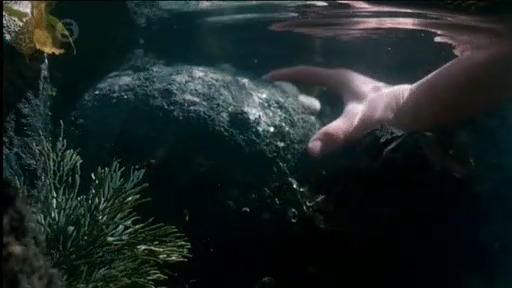
Figure 6: Angus finds the egg with Crusoe inside 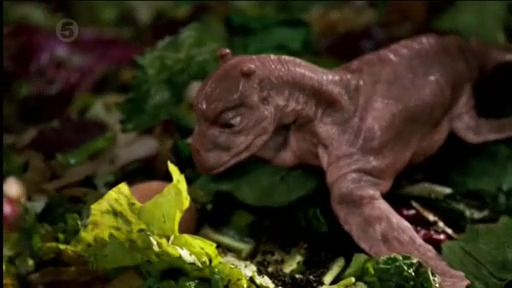
Figure 7: Crusoe eyeing up an egg 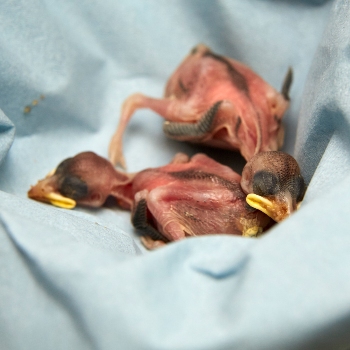
Figure 8: Baby birds [8]
Angus may act as if he has found and adopted a stray dog, but the reality of caring for a mythical creature eventually jumps out. He experiences all the rituals of pet ownership: naming, bonding, and feeding but also the generally unnecessary classification process. The camera cuts from watching Crusoe eat, to Angus sitting on the floor searching books for the right species, while on the other side of the screen the bin wobbles side to side, as Crusoe’s enthusiastic feeding continues. The characters are absorbed in entirely separate activities and so classification, like naming, is just a human effort to understand and care for an animal. Crusoe does not match any known, recorded species until Angus lowers the book, and focus moves from an illustration of bearded dragons to Crusoe with a lettuce ‘beard’ stuck around its long neck. This misclassification is amusing because so evidently wrong and because the ever-hungry Crusoe tries to bite the lettuce while wearing it. Angus is already smiling looking at the picture and knows it is wrong before even seeing Crusoe, who looks up at Angus with an inquisitive expression as if wearing the lettuce purposely to try to help his search. The lettuce is an ill-fitting costume, making Angus realise the futility of looking through science books. Crusoe must be a misfit species. In this situation it is fiction not fact that will teach Angus, because a mythical creature has no textbook instructions for care. The young water horse proves to be a messy and difficult companion to have around the house. Its strangeness in appearance, sound and actions, and the failure of normal classification reiterates that even if friendship may be possible, it cannot be the same friendship as might form between boy and pet.
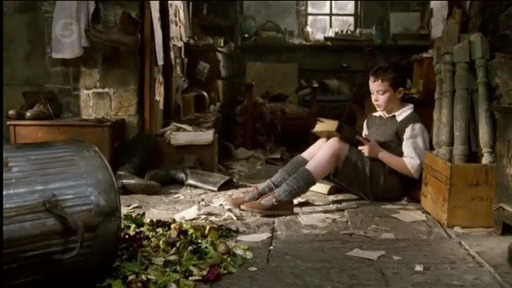
Figure 9: Angus looking in books to find out what Crusoe is 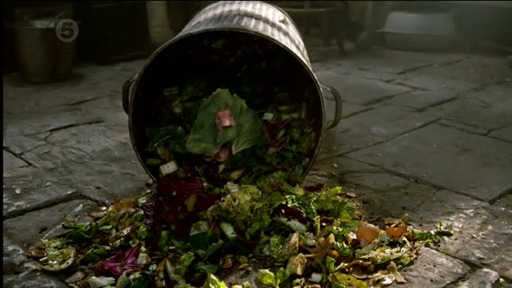
Figure 10: Crusoe wearing a piece of lettuce to look like a bearded dragon
Footnotes:
[1] BBC, ‘Loch Ness Monster may be a giant eel, say scientists’, BBC, 2019 <https://www.bbc.co.uk/news/uk-scotland-highlands-islands-49495145> [accessed 7 November 2022].
[2] IMDb, ‘The Water Horse’, IMDb, [n.d.] < https://www.imdb.com/title/tt0760329/> [accessed 7 November 2022].
[3] The Water Horse: Legend of the Deep, Directed by Jay Russell (Sony pictures Releasing, 2007).
[4] Dani Di Placido, ‘The ‘’Return’’ Of The Loch Ness Monster Feels Amusingly Appropriate’, Forbes, 2020 < https://www.forbes.com/sites/danidiplacido/2020/06/24/the-return-of-the-loch-ness-monster-feels-amusingly-appropriate/?sh=529985e472c0> [accessed 8 January 2023].
[5] The Water Horse: Legend of the Deep, Directed by Jay Russell (Sony pictures Releasing, 2007).
[6] Gerri Miller, ‘Inside ‘’The Water Horse’’ ’, HowStuffWorks, [n.d.] <https://entertainment.howstuffworks.com/water-horse.htm> [accessed 3 January 2023].
[7] ‘Ibid.’
[8] RSPCA, ‘Found a baby bird out of a nest?’, RSPCA, [n.d.] <https://www.rspca.org.uk/adviceandwelfare/wildlife/orphanedanimals/babybirds> [accessed 8 January 2023].
Bibliography:
BBC, ‘Loch Ness Monster may be a giant eel, say scientists’, BBC, 2019 <https://www.bbc.co.uk/news/uk-scotland-highlands-islands-49495145> [accessed 7 November 2022]
Di Placido, Dani, ‘The ‘’Return’’ Of The Loch Ness Monster Feels Amusingly Appropriate’, Forbes, 2020 < https://www.forbes.com/sites/danidiplacido/2020/06/24/the-return-of-the-loch-ness-monster-feels-amusingly-appropriate/?sh=529985e472c0> [accessed 8 January 2023]
IMDb, ‘The Water Horse’, IMDb, [n.d.] < https://www.imdb.com/title/tt0760329/> [accessed 7 November 2022]
Potosky, Mallory, ‘Jay Russell Brings the Water Horse to Life’, MovieMaker, 2007 <https://www.moviemaker.com/jay-russell-brings-the-water-horse-to-life-20071210/> [accessed 12 November 2022]
Miller, Gerri, ‘Inside ‘’The Water Horse’’ ’, HowStuffWorks, [n.d.] <https://entertainment.howstuffworks.com/water-horse.htm> [accessed 3 January 2023].
RSPCA, ‘Found a baby bird out of a nest?’, RSPCA, [n.d.] <https://www.rspca.org.uk/adviceandwelfare/wildlife/orphanedanimals/babybirds> [accessed 8 January 2023]
Russel, Jay, dir., The Water Horse: Legend of the Deep, (Sony pictures Releasing, 2007). Channel 5, 10 August 2014, 5.05pm <https://learningonscreen.ac.uk/ondemand/index.php/prog/016863D8?bcast=113914986> [accessed 7 November 2022]